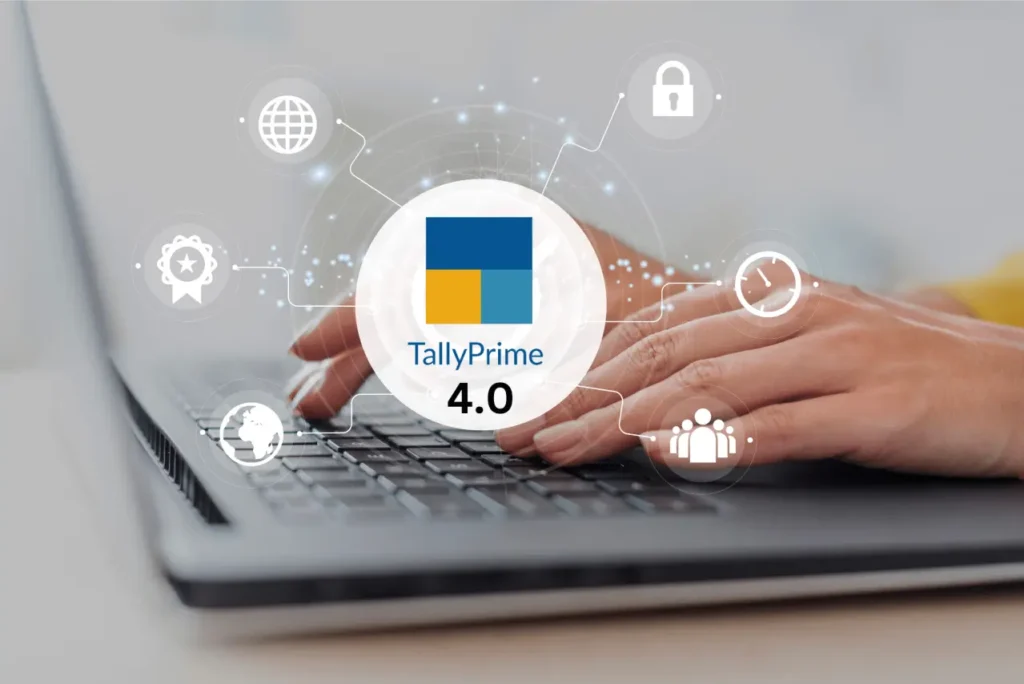In the realm of accounting software, Tally stands as a towering example of functionality and reliability. Favoured predominantly by small and medium-sized businesses, it streamlines complex financial tasks into manageable processes. However, in today’s rapidly evolving tech landscape, cloud computing is emerging as a pivotal force, revolutionizing how software applications are accessed and used. In fact, roughly around 80% of businesses in India use Tally to maintain their book of accounts.
This shift towards cloud-based solutions is not just a trend but a transformative movement, offering scalability, enhanced data security, and operational flexibility. Tally on Cloud marries the robust features of Tally with the myriad benefits of cloud computing, creating a synergy that promises to redefine the efficiency and accessibility of financial management for businesses. This comprehensive guide aims to explore this integration in depth, delving into the nuances of hosting Tally on Cloud environments, its benefits, and its adaptability, particularly in the context of macOS users.
What is Tally on Cloud?
Tally on Cloud is a groundbreaking integration where Tally, the esteemed accounting software, is hosted on remote cloud servers. This fusion brings together the time-tested efficiency of Tally with cutting-edge advancements in cloud technology. It represents a significant leap from traditional, locally installed software models to a more dynamic, cloud-based framework.
This innovative approach allows users to operate Tally ERP software over the internet, without the need for installing it on individual computers. If chosen to buy Tally on Cloud, businesses unlock the potential to access their financial data and accounting functionalities from anywhere in the world, provided they have an internet connection. This paradigm shift is not just about location independence; it’s about redefining how financial data is managed, accessed, and secured.
What is Tally on Cloud?
Businesses might not choose to invest in this technology due to the Tally on Cloud price. However, here are some reasons why Tally on Cloud is a beneficial option for companies:
- Accessibility and Mobility: One of the most compelling benefits of Tally on Cloud is the accessibility it offers. Users can access their Tally accounts from any device, be it a desktop, laptop, or mobile device, breaking free from the constraints of office-bound software.
- Enhanced Security: Cloud servers provide robust security measures that are often more advanced than what businesses could implement on-premise. Data stored in the cloud is protected by layers of security protocols, ensuring safety from unauthorized access and cyber threats.
- Cost-Effectiveness: Tally on Cloud eliminates the need for substantial upfront investments in hardware infrastructure. It also reduces the ongoing costs associated with software maintenance and updates, making it a cost-effective solution for businesses of all sizes.
- Scalability: Cloud environments allow for easy scalability. As a business grows, its data and processing needs can increase. Tally on Cloud can seamlessly scale to meet these growing demands without the need for physical hardware upgrades.
- Disaster Recovery and Backup: With data backed up in the cloud, businesses are better prepared for any unforeseen events like hardware failures or natural disasters. Cloud providers typically offer robust backup and disaster recovery solutions, ensuring business continuity.
How to Host Tally on Cloud
Hosting Tally on the cloud involves a series of steps, each critical to ensuring a smooth transition from a traditional setup to a cloud-based environment. This guide breaks down the process into manageable segments, covering everything from initial preparation to the final stages of configuration and access.
Ensuring the Basics
Before diving into the cloud, it’s essential to have the foundational elements in place. This includes having a valid Tally license, which is a prerequisite for using the software, regardless of the hosting environment. Additionally, businesses should assess their current IT infrastructure and internet connectivity, as these will play a crucial role in the cloud hosting experience. Reliable internet connectivity is paramount for seamless access and operation of Tally on the cloud.
Choosing a Cloud Service Provider
Choosing a cloud service provider or a Tally on Cloud service provider is a decision that should be guided by specific business needs and preferences. Key factors to consider include:
- Uptime and Reliability: Opt for a provider with a strong track record of high uptime. Consistent availability is crucial for uninterrupted access to financial data.
- Security Protocols: Since financial data is sensitive, the chosen provider that offers Tally on Cloud services should have robust security measures in place, including data encryption, firewalls, and regular security audits.
- Customer Support: Ensure that the provider offers reliable and responsive customer support. Quick assistance in case of any issues is essential for maintaining business continuity.
- Scalability and Flexibility: The provider should offer scalable solutions that can adapt to the growing needs of your business.
Configuring and Securing Tally
Post-installation, it’s crucial to configure Tally for optimal performance and secure the data:
- Performance Tuning: Adjust settings within Tally and the VM to ensure smooth operation. This might involve allocating additional resources or tweaking performance settings.
- Data Security: Implement strong passwords and access controls. Set up regular data backups to protect against data loss.
- Regular Updates: Keep both the cloud OS and Tally software up to date with the latest patches and updates for enhanced security and performance.
Accessing Tally from Different Devices
One of the significant advantages of Tally on Cloud is the ability to access it from various devices:
- Remote Access Setup: Configure the cloud environment for remote access. This could involve setting up a VPN or using remote desktop services.
- Device Compatibility: Ensure that employees can access Tally from different devices, including PCs, laptops, and mobile devices, for seamless operation.
By following these steps meticulously, businesses can successfully host Tally on the cloud, harnessing the power of cloud computing to make their financial management more efficient, secure, and accessible. This transition not only aligns with the evolving digital landscape but also positions businesses to be more responsive and adaptable to future technological advancements.
Of course, you can choose to avoid this hassle entirely, with Software@Work. We offer to conduct all operational work for you, ensuring our customers never have to worry about mundane tasks.
FAQs For Tally on Cloud
Q1: Can I use Tally on Cloud without a Tally license?
A1: No, a valid Tally license is required to use Tally on Cloud.
Q2: How secure is my data on Tally on Cloud?
A2: Tally on Cloud providers usually offer robust security measures including data encryption and regular backups to ensure data safety.
Q3: Can I access Tally on Cloud from a mobile device?
A3: Yes, Tally on Cloud can be accessed from various devices, including mobile, as long as you have an internet connection.
Q4: Is the performance of Tally affected when used on the cloud?
A4: Generally, Tally’s performance is not compromised on the cloud. In fact, cloud platforms can offer better performance due to superior server capabilities.
Q5: Are there any additional costs involved in using Tally on Cloud?
A5: While you save on hardware and maintenance, you may incur costs related to cloud service provider fees.
Q6: How do I choose the best cloud service provider for Tally?
A6: Consider factors like uptime, security measures, cost, and customer support while choosing a provider.
Q7: What if Tally is not natively compatible with my Mac?
A7: You can use workarounds like virtual machines or Boot Camp to run Tally on Mac.






















































